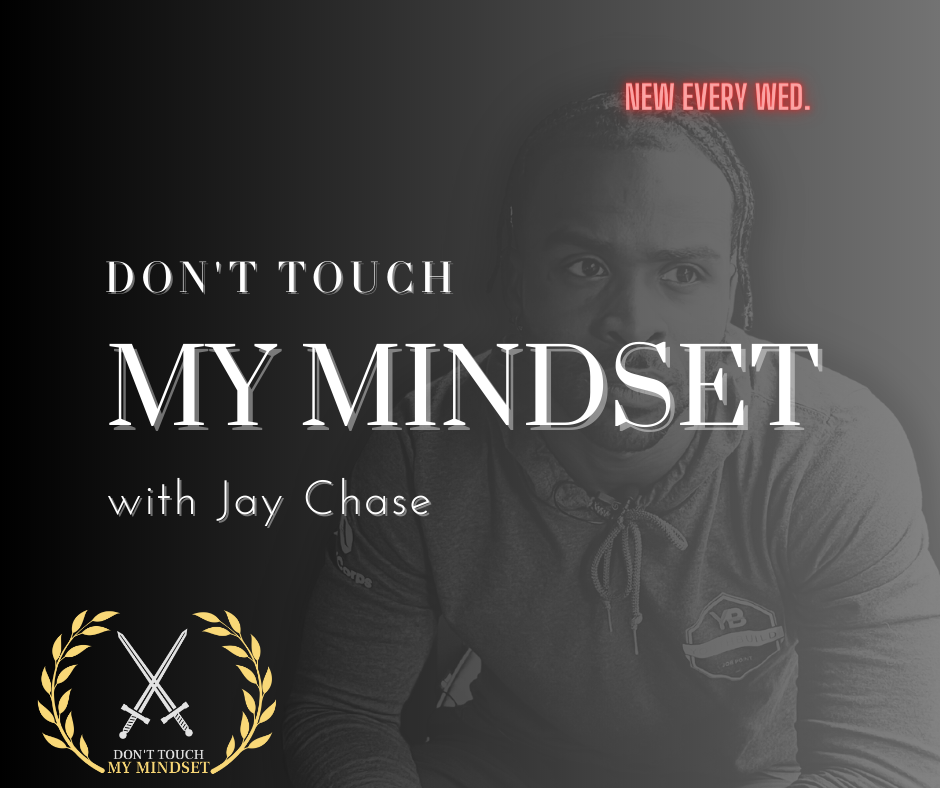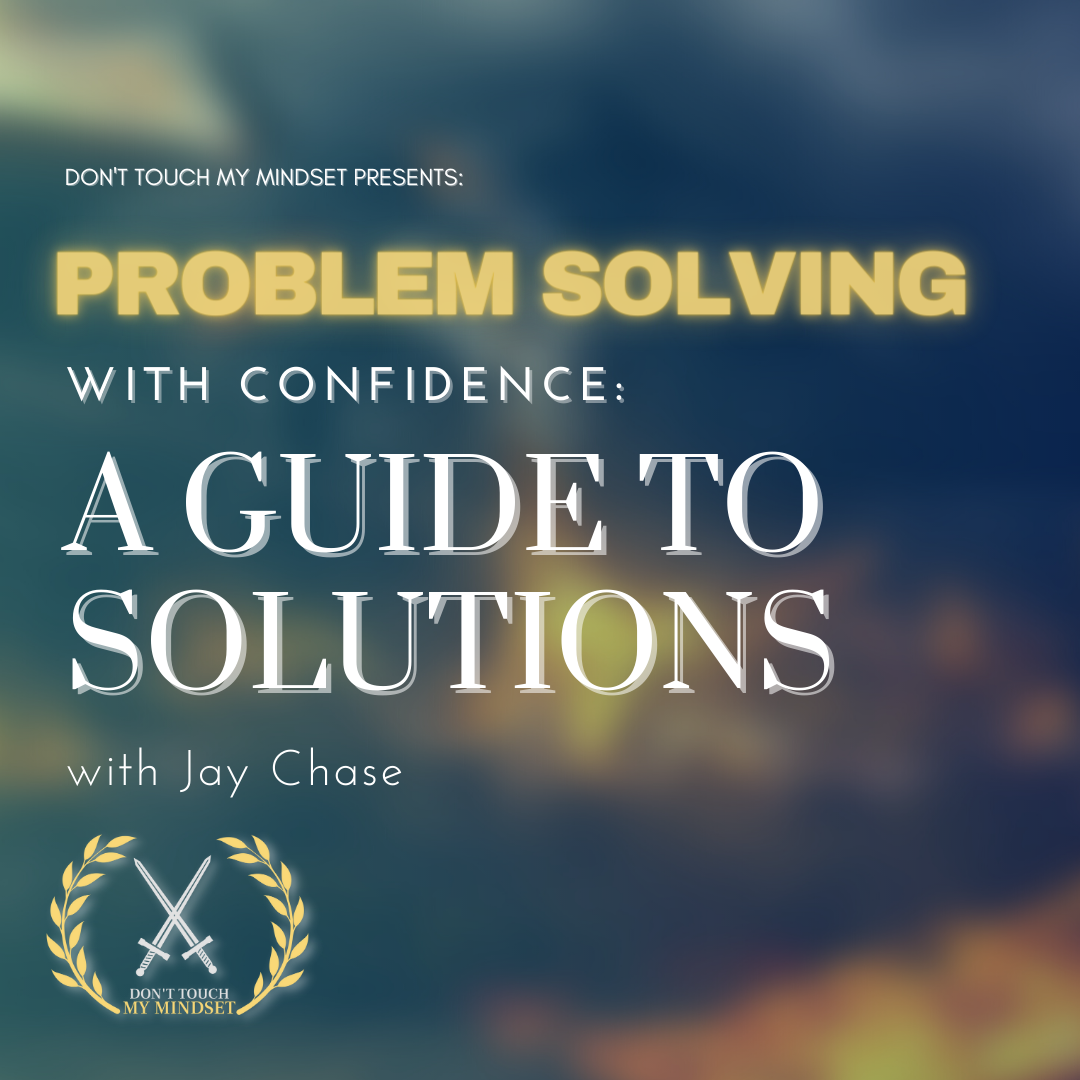Unleashing Potential: The Power of Growth Mindset Over Fixed Mindset

In a highly competitive business landscape, the greatest differentiator often isn't a product, a strategy, or even the market – it's the human factor. Specifically, the mindset of those who lead, those who innovate, and those who tirelessly hustle to turn visions into realities.
Let's begin with a tale of two leaders.
Leader A, a highly talented individual, has led a successful business division for several years. Despite the team's achievements, they're notorious for a lack of innovation and dread challenges that could jeopardize their "success streak." For Leader A, preserving his image of competence is paramount.
On the other hand, Leader B, who also leads a successful team, thrives on challenges. Each new problem is a welcome puzzle, a learning opportunity. Failure isn't seen as a blow to her competence but a stepping stone to future successes.
These leaders, both successful in their own rights, approach their roles with remarkably different mindsets. Leader A operates from a "fixed mindset," viewing intelligence, talent, and abilities as static traits. In contrast, Leader B adopts a "growth mindset," viewing challenges as catalysts for development and growth.
The concept of "mindset" is not just psychological jargon; it is a profound and influential part of our daily life, shaping our behavior, defining our approach to obstacles, coloring our perception of success, and mapping our professional and personal growth trajectories. Developed by psychologist Dr. Carol Dweck, these mindset definitions - "fixed" and "growth" - revolutionized our understanding of success and failure, potential and achievement.
In this exploration, we'll delve into the fascinating world of mindsets, investigating the profound difference between a fixed and growth mindset. We'll shed light on the psychological underpinnings of these orientations, demonstrate their impact with real-life examples, and provide practical advice for fostering a growth mindset in oneself and in others.
Through this journey, we aspire to equip you with the insight and tools to transform your perspective, embrace the power of potential, and ultimately, unleash unprecedented levels of success and satisfaction in both your professional and personal life. Brace yourself, because a growth mindset isn't just a perspective—it's a game-changer. Welcome aboard.
Section I: Understanding Mindsets
Part A: What is a Fixed Mindset?
Drawing upon the narrative we began with, let's delve deeper into the concept that underpins Leader A's attitude - the "fixed mindset." At its core, a fixed mindset thrives on the belief that our abilities, intelligence, and talent are static traits. They're handed to us at birth, and no amount of effort can alter them significantly.
Fixed mindset individuals, like Leader A, see their capabilities as rigidly set parameters. Imagine the mind as a vessel; for fixed mindset believers, this vessel comes in a fixed size. You can fill it up to the brim, but it can't expand. You're born with a particular intelligence quotient, a certain degree of talent, a defined competence level, and your life's journey is about proving these innate abilities rather than improving them.
Now, you might think, "Isn't it good to recognize your limitations?" Yes, self-awareness is valuable, but a fixed mindset does more than acknowledge limitations—it's confined by them. Challenges become threats rather than opportunities, as they could expose shortcomings. Effort is seen as fruitless; why try hard if your abilities are already capped? Criticism is personal and painful, rather than constructive, and the success of others can be perceived as a benchmark you failed to reach.
The implication of this mindset extends far beyond individual attitudes and infiltrates the wider corporate culture. In a business environment, a fixed mindset can stifle innovation, hinder learning and development initiatives, and create a fear-based working environment. Employees are less likely to take risks or think outside the box, for fear of failure. It's a defensive approach that focuses more on maintaining the status quo rather than breaking new ground.
However, a fixed mindset is not a life sentence. The mind is a fascinating entity and understanding its mechanisms is the first step toward transformation. So, as we continue our exploration, let's turn to a more liberating perspective, one that sees potential as something to be unlocked and abilities as capacities to be developed - the growth mindset.
Part B: What is a Growth Mindset?
Continuing our exploration, we now turn our focus to the ideology that fuels Leader B's perspective: the "growth mindset". Embracing a growth mindset implies a fundamental belief in the potential for development. It upends the notion of fixed intelligence, talent, or abilities. In contrast to the fixed mindset, a growth mindset sees the mind as a dynamic entity, capable of learning, evolving, and expanding.
Consider again the metaphor of the mind as a vessel. For those with a growth mindset, this vessel isn't rigid but expandable. Yes, we might have a starting volume, an initial set of abilities and talents, but these are not our limitations; they are our starting point. With consistent effort, the vessel can grow, expanding its capacity and capabilities. We can learn new skills, increase our intelligence, and improve our competencies. The journey of life transforms from a platform to showcase our innate abilities into an exciting path of endless learning and self-improvement.
In the sphere of a growth mindset, challenges morph into opportunities, acting as stimuli that spark the growth process. Effort morphs into the engine of growth, a critical ingredient in the recipe of development. Criticism becomes constructive feedback, offering valuable insights for improvement. And the success of others? That transforms into inspiration, proof of what's possible with effort and persistence.
The implications of a growth mindset within the business environment are profound. It fuels a culture of innovation, encourages risk-taking, and promotes learning. It creates an atmosphere where employees are excited to push boundaries, embrace challenges, and celebrate growth. It breeds resilience, adaptability, and a solution-oriented outlook, fostering an environment where every setback is seen as a setup for a comeback.
In essence, a growth mindset isn't merely about being open to learning; it's about actively seeking growth, embracing the process, and celebrating the journey of becoming. As we delve deeper into the intricacies of mindsets, let's remember: the power to choose our mindset lies within us, and with it, the power to transform our personal and professional lives.
Part C: Fixed vs. Growth Mindset
With a clear understanding of the fixed and growth mindsets, let's illuminate the stark contrasts between them. This dichotomy is fundamental not just in comprehending our attitudes towards challenges, effort, criticism, and others' success, but also in shaping the trajectory of our personal and professional growth.
- Attitude towards Challenges: For a fixed mindset, challenges are like impending storms, threatening to expose inadequacies and shatter the image of competence. In stark contrast, a growth mindset perceives challenges as refreshing rains, nurturing the seeds of potential, and sparking growth.
- Perception of Effort: Where a fixed mindset views effort as a testament to deficiency, a growth mindset celebrates it as a pathway to mastery. Effort is not seen as compensation for lack of talent but as a tool to forge skills and expand capabilities.
- Response to Criticism: A fixed mindset personalizes criticism, turning it into a threat to self-worth. On the flip side, a growth mindset depersonalizes criticism, treating it as valuable feedback, a compass guiding growth.
- Reaction to Others' Success: Those with a fixed mindset often view others' success as a benchmark they failed to reach, leading to feelings of inadequacy or envy. However, a growth mindset transforms others' success into inspiration, a source of motivation and learning.
The consequences of these divergent mindsets are far-reaching. A fixed mindset can lead to stagnation, fear of failure, and a reluctance to venture beyond comfort zones. In contrast, a growth mindset fosters resilience, continual learning, and the courage to push boundaries. It's the difference between merely surviving and genuinely thriving in today's fast-paced, ever-evolving business environment.
In the subsequent sections, we will explore how these mindsets influence our actions, shape our destinies, and determine the success of our businesses. And remember, while we may gravitate naturally toward one mindset, the capacity to shift our perspective—our mindset—is in our hands. That is the real power of the growth mindset. It's not just about believing in our potential to grow; it's about taking charge and making it happen.
Section II: The Power and Influence of Mindset
Part A: The Psychology Behind Mindsets
The landscape of mindset is not purely philosophical; it's grounded in rigorous psychological research. Leading this intellectual revolution is Stanford psychologist Dr. Carol Dweck, whose groundbreaking work has fundamentally shifted our understanding of achievement and success.
Dr. Dweck's studies brought to light the immense influence our beliefs about abilities exert on our behavior, choices, and overall life trajectory. This finding is pivotal because it implies that by modifying our mindset, we can change our course of action and, consequently, our outcomes.
In a fixed mindset, the desire to look competent often trumps the desire to learn, causing individuals to avoid challenges and give up easily when faced with obstacles. This mindset equates mistakes with failure and treats criticism as a personal attack. It tends to feel threatened by the success of others and often leads to plateauing early and achieving less than full potential.
Conversely, a growth mindset promotes a passion for learning over a hunger for approval. It encourages resilience in the face of setbacks and perceives effort as a pathway to mastery. It uses criticism as a tool for growth and finds lessons and inspiration in the success of others. As a result, it allows individuals and organizations to reach higher levels of achievement and maintain a lifelong love for learning and growth.
What Dweck's research underscores is the transformative power of mindset at an individual and organizational level. By fostering a growth mindset, we can not only enhance our performance but also create a more positive, collaborative, and dynamic environment that sparks innovation and drives success.
Part B: Mindset in Action: Examples from Real Life
Real-life stories often illuminate the abstract, so let's examine two instances that bring the contrasting mindsets to life.
Consider the case of Xerox Corporation in the 1970s. Researchers at Xerox's Palo Alto Research Center invented the first personal computer with a graphical interface, a groundbreaking development. However, the company's leadership, with their fixed mindset, failed to recognize the innovation's potential, sticking to what they knew best - photocopying. Consequently, Steve Jobs and Apple, exhibiting a growth mindset, leveraged this invention, leading to the iconic Macintosh.
In the realm of sports, the story of Michael Jordan showcases the power of a growth mindset. Despite being cut from his high school basketball team, Jordan didn't succumb to a fixed mindset and accept his "fate". Instead, his growth mindset propelled him to work harder, developing his skills and abilities, ultimately leading him to become an NBA legend.
These examples illustrate how a fixed mindset can lead to missed opportunities and potential unfulfilled, while a growth mindset can open doors, shatter ceilings, and redefine what's possible. They highlight the transformative power of our mindset, not only on our personal achievements but also on the success of organizations and, indeed, the course of history. As we continue to navigate the terrain of mindsets, let's remember the power that lies in our belief about our abilities. Because, in the end, whether we choose to remain stuck or decide to grow is, quite literally, all in our minds.
Section III: Cultivating a Growth Mindset
Part A: Acknowledging the Mindset
The journey to a growth mindset starts with a crucial first step: acknowledging your current mindset. We often operate under the influence of our mindsets subconsciously. Bringing them into conscious awareness enables us to scrutinize our deep-seated beliefs, understand their influence, and initiate the process of transformation.
Start by examining your responses to challenges, setbacks, criticism, and the success of others. Do you shy away from challenges for fear of failure, or do you view them as opportunities for growth? When faced with setbacks, do you retreat, or are you resilient, viewing it as a necessary part of the learning process?
Developing self-awareness and honesty about your mindset is a crucial part of this process. By recognizing patterns indicative of a fixed mindset, you can begin to dismantle them, laying the groundwork for a growth mindset. Remember, acknowledging a fixed mindset is not a cause for self-judgment but a stepping stone towards growth.
Part B: Mindset Shift: From Fixed to Growth
The transition from a fixed to a growth mindset is an active process that involves challenging long-held beliefs and transforming thought patterns. Here are a few strategies to guide this shift:
- Change Your Self-Talk: Pay attention to your internal dialogue. Convert self-defeating thoughts like "I can't do this" into growth-oriented affirmations like "I can learn to do this."
- Embrace Challenges: Instead of avoiding challenges, welcome them as opportunities for growth. Adopt an experimental mindset, where "failure" is just data that guides your learning.
- Reframe Setbacks: View setbacks not as evidence of incompetence, but as a natural part of the growth process. Learn from them and adjust your strategies accordingly.
Remember, change doesn't happen overnight. It takes consistent effort and patience. But with each step, you're paving the way to a more resilient, adaptable, and successful self.
Part C: Nurtifying a Growth Mindset in Others
As parents, teachers, or leaders, we can play a pivotal role in fostering a growth mindset in children or team members. Here are some strategies to facilitate this:
- Encourage Effort Over Outcome: Celebrate the process of learning as much as, if not more than, the outcome. Praise hard work, persistence, and resilience, not just success.
- Promote the Power of Yet: Encourage the understanding that not being able to do something now does not mean one will never be able to. There's power in "I can't do this... yet."
- Provide Constructive Feedback: Constructive criticism can be a powerful tool for growth. Make it specific and actionable, focusing on strategies and effort rather than personal traits.
By fostering a growth mindset in others, we not only help them achieve their potential but also create a positive, dynamic, and growth-oriented environment.
Part D: Maintaining a Growth Mindset
Cultivating a growth mindset is not a one-time event but a lifelong journey. Maintaining a growth mindset requires continual learning and perseverance. Here are some tips to sustain a growth mindset:
- Embrace Lifelong Learning: Pursue learning for the sake of growth, not just achievement. Read widely, seek new experiences, and continually expand your skills.
- Nurture Perseverance: Develop resilience in the face of setbacks. Treat them as opportunities for learning and growth rather than as failures.
- Stay Open to Feedback: Continue to view criticism as a tool for improvement. Seek feedback regularly and act on it constructively.
A growth mindset is the key to unlocking your full potential and leading a fulfilling and successful life. It's not just about reaching the top; it's about the journey you take, the person you become along the way, and the lives you touch with your growth. So, start cultivating your growth mindset today and chart a course for personal and professional success that knows no bounds.
Section IV: Common Misconceptions and Pitfalls
Part A: Misunderstanding the Growth Mindset
Despite its popularity, the growth mindset is often misunderstood, leading to misconceptions that may undermine its effectiveness. Let's clear up some common fallacies:
- It's All About Effort: While effort is a vital part of growth, the growth mindset is not merely about working harder. It's about learning and development. It involves trying different strategies, seeking help when needed, and learning from setbacks. Mindless effort without learning and strategy adjustment won't lead to growth.
- Everyone Can Be Einstein with the Right Mindset: The growth mindset does not imply that anyone can become a genius in any field purely through effort. Instead, it suggests that we can improve, significantly and continuously, with effort and perseverance.
- Growth Mindset = Positive Thinking: While a growth mindset encourages optimism about our growth potential, it is not blind positivity. It acknowledges difficulties and setbacks as part of the growth process, promoting realistic optimism that’s grounded in our ability to learn and overcome challenges.
By clarifying these misconceptions, we can harness the true power of a growth mindset and leverage it to foster personal and professional growth.
Part B: The False Growth Mindset
In her later work, Carol Dweck introduced the concept of the "false" growth mindset, a superficial or misunderstood application of the growth mindset. A false growth mindset is an oversimplified version that reduces the rich, complex idea of growth mindset to a mere catchphrase, empty of substance and true understanding.
It manifests in a few common ways:
- Praising Effort Alone: While effort is important, praising effort alone, especially when it's not linked to progress or learning, can be counterproductive. It's crucial to praise productive effort that leads to learning and improvement.
- Proclaiming a Growth Mindset Without Living It: Simply declaring a belief in growth mindset does not make it so. It must be reflected in actions – embracing challenges, persevering in the face of setbacks, viewing effort as a path to mastery, learning from criticism, and finding lessons and inspiration in the success of others.
- Ignoring the Fixed Mindset: We all harbor elements of a fixed mindset. Ignoring this and pretending we operate solely from a growth mindset blocks our path to genuine growth. It's important to recognize and work through our fixed mindset triggers.
By being aware of the pitfalls of a false growth mindset, we can work towards nurturing a true growth mindset, rooted in a deep-seated belief in our ability to grow and a commitment to the journey of lifelong learning. Remember, adopting a growth mindset is not about paying lip service to the concept, but about living it every day, in every challenge we face, every failure we encounter, and every success we celebrate.
Conclusion
In our exploration of the terrain of mindsets, we've journeyed from the stark limitations of a fixed mindset to the boundless potential of a growth mindset. We've delved into the power and influence of our mindset, understood how to cultivate a growth mindset, and acknowledged the pitfalls to avoid along the way.
The journey towards cultivating a growth mindset is transformative, empowering us to rise above challenges, learn from our setbacks, and continually strive towards bettering ourselves. It redefines failure as a stepping stone to success, promotes a love for learning, and unlocks our potential in ways we may not have imagined possible.
However, the journey does not end here. Understanding the concept of a growth mindset is just the beginning. The real journey involves putting this understanding into practice, nurturing this mindset within ourselves and inspiring it in others. It's about recognizing the power that lies in our beliefs about our abilities and harnessing this power to bring about positive change in our lives and the world around us.
So, I encourage you, as you go forth in your journey, to challenge your existing beliefs, embrace the power of yet, view effort as a path to mastery, and make a commitment to lifelong learning. Remember, your potential is limitless, and your mindset is the key to unlocking it.
To continue this journey of mindset mastery and personal growth, tune into the "Don't Touch My Mindset" podcast. Each episode offers valuable insights, practical advice, and inspiring stories to help you foster a powerful growth mindset. Remember, your mindset is the engine of your success. So, as the podcast rightly says, don't let anything or anyone touch it.
Moreover, join me on Instagram @thejaychase for a regular dose of inspiration, motivational tips, and strategies to strengthen your growth mindset and transform your life. Here, we are not just a community, but a tribe of growth-minded individuals supporting each other on our personal and professional journeys.
In conclusion, whether we stagnate or grow, falter or flourish, descend into self-doubt or rise with self-confidence, it's all in our mindsets. So, let's make the conscious choice to cultivate a growth mindset and unlock our true potential.
Embrace the journey, cultivate a growth mindset, and watch as you unfold the best version of yourself. There's a whole world waiting to witness your growth. So, go on, take the plunge. You've got this!








